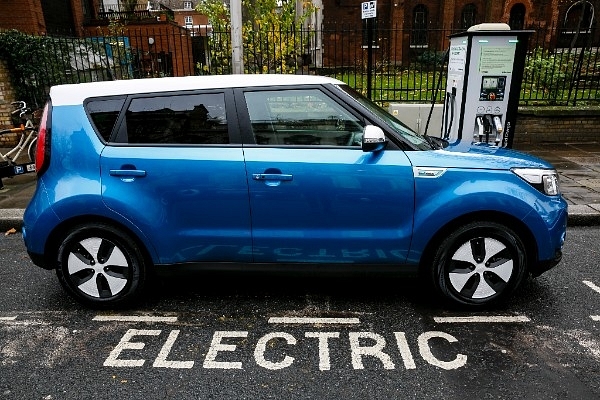Infrastructure
India, The EV Nation: Here Is How The Government May Be Planning That
- The move to electric vehicles will occur in phases, with an aim to create an ecosystem of such vehicles in collaboration with several manufacturers.

Kia Soul EV being charged in London. (Miles Willis / Stringer via Getty Images)
India’s plan to move towards an entirely electric road transport system by 2030 is slowly taking shape.
It has often been touted as the next “LED movement”, referring to union minister Piyush Goyal’s push for faster adoption of light-emitting diode (LED) bulbs across the country, which was described by the Vienna Energy Forum as the “largest energy transformation project in the world”. The LED programme was successful, and it subsequently aided in electrifying many rural pockets around the world.
Like the LED movement, the electric vehicle (EV) movement – spearheaded by state-owned Energy Efficiency Services (EESL) – is being planned in several phases, and aims to create an ecosystem of EVs in collaboration with several manufacturers.
Under the first phase, due for launch this December, EESL will invite tenders for the supply of 25,000 e-autos and 25,000 e-rickshaws, which will then be sold to aggregators. An e-rickshaw can carry four passengers and travel at speeds up to 25km/hr while an e-auto can travel longer distances at faster speeds, writes Lijee Philip for the Economic Times.
Among those in the fray to supply these vehicles are Mahindra Electric, Kinetic Green, Electrotherm and Lohia Auto. Taxis manufactured by Mahindra and Kinetic’s e-rickshaws are among the vehicles that Nagpur is using under its ‘electric mass transit’ project that was launched in May this year.
The process of setting up charging infrastructure is also gaining momentum, with public sector establishments such as NTPC Limited and the Power Grid Corporation of India Limited as well as private players such as the Hero Group setting up the required infrastructure.
Breaking convention, Mahindra’s e-rickshaws will not feature lithium-ion batteries but lead-acid batteries. Manufactured in Haridwar, these vehicles can run 80km in one charge. Kinetic is currently the market leader in the segment, selling over 10,000 units last year. Unorganised players form the bulk of the operators in this segment, currently witnessing one lakh vehicles being sold every month. However, unlike Mahindra, Kinetic plans to use lithium-ion batteries because they are easier to swap. This is because of their faster charging speeds and lighter weights.
With 10 lakh e-rickshaws on the road – as compared to two crore autos – the sector is attracting more players such as SUN Mobility and Lohia Auto.
The rising costs of fuel-powered vehicles vis-à-vis the falling prices of batteries and EVs in general are making the latter more viable for operators.
India’s goal to be free of fuel-powered vehicles by 2030 now rests with the private sector, but the government will be able to leverage it well to expand the fledgling ecosystem.
Introducing ElectionsHQ + 50 Ground Reports Project
The 2024 elections might seem easy to guess, but there are some important questions that shouldn't be missed.
Do freebies still sway voters? Do people prioritise infrastructure when voting? How will Punjab vote?
The answers to these questions provide great insights into where we, as a country, are headed in the years to come.
Swarajya is starting a project with an aim to do 50 solid ground stories and a smart commentary service on WhatsApp, a one-of-a-kind. We'd love your support during this election season.
Click below to contribute.
Latest